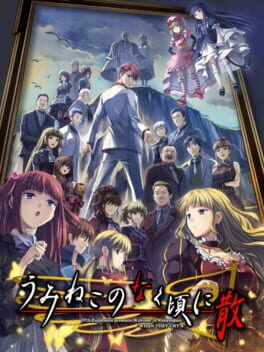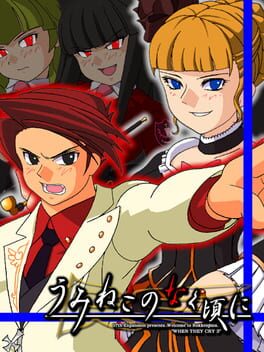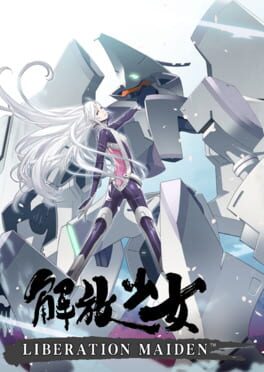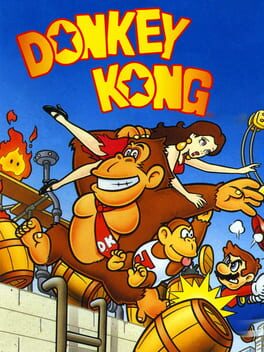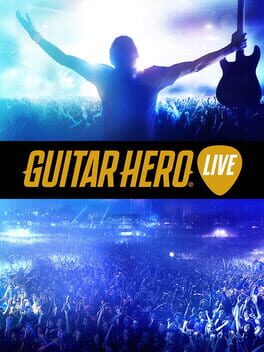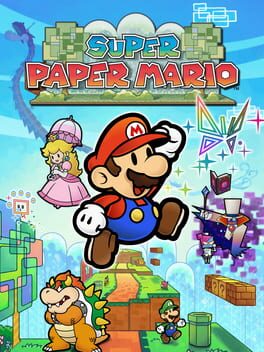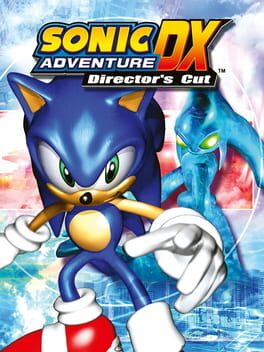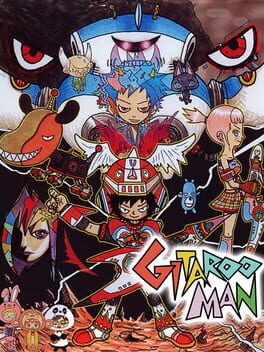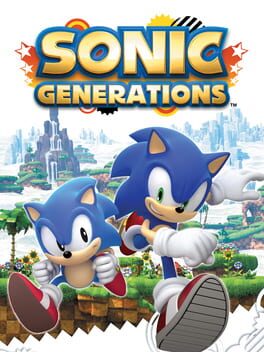SunlitSonata
4134 Reviews liked by SunlitSonata
Liberation Maiden
2012
Liberation maiden is a short but sweet game for the price it was formerly offered at. The gameplay consists 100% of you blasting around at high speeds in a flying mech while shooting everything in sight. Interestingly aiming is controlled with the touch screen, which highlights both the flaws and advantages of this control method. On one hand, the touch screen gives you an extremely high and satisfying degree of accuracy, and it's great to be able to have your cursor anywhere at any time. On the other hand however, it's very awkward to hold a 3DS in such a way while playing such an action focussed game, and you'll likely find your hand frequently cramping up. Aside from this one issue however, the game is a very fun and nice looking shooter game. I’d almost call it a bullet hell but it doesn't ever reach a super high level of difficulty.
The game is very short, but as i mentioned before it was originally sold at quite a cheap price so I don’t have too much of an issue with it. The story is pretty bare-bones and features some okay looking anime cutscenes, but that's about it. My main complaint with Liberation Maiden is that the ost for the first level is one of the best pieces of music for an action game I’ve ever heard, and then it immediately switches to elevator stock music for the remainder of the game.
For a little 1-2 hour experience Liberation Maiden is a fairly fun little gem. It's definitely worth downloading if you happen to own a modded 3DS.
The game is very short, but as i mentioned before it was originally sold at quite a cheap price so I don’t have too much of an issue with it. The story is pretty bare-bones and features some okay looking anime cutscenes, but that's about it. My main complaint with Liberation Maiden is that the ost for the first level is one of the best pieces of music for an action game I’ve ever heard, and then it immediately switches to elevator stock music for the remainder of the game.
For a little 1-2 hour experience Liberation Maiden is a fairly fun little gem. It's definitely worth downloading if you happen to own a modded 3DS.
Donkey Kong
1994
1994 was a transitionary time for Nintendo's identity, and a deceptively important year in continuum, despite the lack of any new hardware. The good ol' NES saw its final few official releases, though the Famicom would be supported for another decade. Though the US Senate Hearings on video games started in 1993, they dragged on through '94 and resulted in the creation of the ESRB later that year. It's the year that Nintendo started firing back at SEGA in a big way with their "Play It Loud!" campaign. It's the year PlayStation, Nintendo's own self-made nemesis, peered into the scene. Development was well underway for the revolutionary "Ultra 64", and a lot of Nintendo's star players were wrapping up their 16-bit outings and starting to look towards the future behind the Z-axis. In a time of such rapid development, even the present was rapidly entering the realm of past-tense.
I mention all this because this feels perfectly embodied by the 1994 Game Boy release of Donkey Kong (which I will henceforth call "Donkey Kong '94" or just "DK '94"). In some ways, DK '94 feels like a passing-the-torch release: it's a remake of the arcade game, of course, but there's a few signifiers of the near future. This is, I believe, the first game to feature Donkey Kong wearing a tie; sort of a middle-step between Shigeru Miyamoto's classic design and Kevin Bayliss's Donkey Kong Country redesign (though I think the tie was Nintendo's idea, not Rare's?). Mario's moveset has been expanded considerably from the original arcade game - in what feels like a preview of then-in-progress Super Mario 64, Mario boasts his side-flip and triple jump.
At the same time, the game feels like a summation of everything prior. It's a remake of Donkey Kong, of course, but there's quite a bit of 2D Mario's DNA at play here. Donkey Kong Jr.'s moveset (and lead) is here, as is the "jump on and throw enemies" mechanic from Super Mario Bros. 2. Both versions of Mario 2 get love, since Poison Mushrooms are here. Thwomps exist here, kinda, and other enemies take after Super Mario Land's design philosophy, where there's a lot of weird blahthingies with untranslated Japanese names (okay, maybe that's not specifically a Super Mario Land nod).
The end result is a game that almost feels like Mario's valediction to its 2D golden era. It isn't, of course; Yoshi's Island was still a year out and holds far more importance in that respect. But I dunno, Yoshi's Island is almost doing its own thing compared to Mario (there's a reason we'd consider it the start of its own subseries, after all). If you're looking at the Mario series doing Mario things, this feels like the last proper 2D Mario from the era's heyday, even moreso than something like Super Mario Land 2. Bringing it full circle is actually a really cool move, and it makes for a nice signing off.
This would be cool enough as a symbolic gesture, but then Nintendo had to go and make one of the most kickass arcade remakes out there on top of it.
So you fire up the game, you wade through a title screen and file select for some reason, and then you're playing some emmereffing Donkey Kong. The game is way simplified, but that's no surprise - Game Boy limitations are the rule, after all, even five years into the grey brick's lifetime. So you fly through a dinky baby version of 25m, crush the pie factory, trounce 75m, and pull the rivets to send Donkey Kong crashing on down. Short, simple, but decent arcade fun.
Then Donkey Kong gets up, abducts Pauline, and runs away. Mario gives chase, and the text "Stage 0 Complete" appears on screen. You're treated to a little cutscene of Mario demonstrating a new game mechanic - locks and keys - and a couple new lives. Then you enter Stage 1, and the game really begins.
Many video game remakes of this era start with a version of this, where the first level is a variant of the original arcade board before it starts to remix and expand the adventure. Off the cuff: Frogger '97, Centipede '98, and Q*Bert '99 all go this route. The alternative, after all, is to wildly reinvent the property, like what you get with Pong: The Next Level, Elevator Action Returns, and Pac-Man World.
But what really catches my eye with Donkey Kong '94 is its compromise right down the middle. It's clearly no replacement for the original - the tech wasn't there yet on Game Boy - but the game knows that, presents an acceptable simulacrum of the original with a straight face, then uses that to explore what it really wants to do. It's no repudiation of the original, like what you get out of Pong: The Next Level's weird penguin opener, or Elevator Action Returns's swerve towards ultra-violence, or Pac-Man World relegating the original game to a bonus round. But Donkey Kong '94 doesn't present the original as a disposable component, either, the way you feel from Frogger/Centipede/Q*Bert's remakes, where the first board is almost entirely irrelevant. In this case, the player isn't just "doing" more Donkey Kong. Arcade Donkey Kong becomes the language that DK '94 explores within its game design, not just its backdrop. This is also where the other games' mechanics - Donkey Kong Jr.'s vine-climbing, Super Mario Bros. 2's pick-and-throw, Donkey Kong Country's barrel-throwing, Super Mario 64's acrobatics - really give the game its own identity, while also making it feel like a natural part to explore within its series continuum.
And, like, the first level of the last world is a to-scale recreation of 25m. The game knows perfectly well what it's doing. It could have created a largely-accurate Donkey Kong experience at any time. But the player had to work for it. And with the skills the player's mastered over the course of the game, ones not available to Jumpman back in 1981, the player can really fly through and crush 25m, the way they thought they did at the start of the game.
This isn't just the best conversion of the original arcade game, arcade-perfect recreations notwithstanding. This is a damn good game in its own right. I didn't even get into how the game uses Donkey Kong Jr. as a minor bad guy, or the cutscenes that both inform the player of game mechanics and progress the narrative, or the out-of-the-box world archetypes, or the surprisingly excellent soundtrack! Hot hell, this game rules. Not to be overlooked, whenever Ninty brings this one back.
I mention all this because this feels perfectly embodied by the 1994 Game Boy release of Donkey Kong (which I will henceforth call "Donkey Kong '94" or just "DK '94"). In some ways, DK '94 feels like a passing-the-torch release: it's a remake of the arcade game, of course, but there's a few signifiers of the near future. This is, I believe, the first game to feature Donkey Kong wearing a tie; sort of a middle-step between Shigeru Miyamoto's classic design and Kevin Bayliss's Donkey Kong Country redesign (though I think the tie was Nintendo's idea, not Rare's?). Mario's moveset has been expanded considerably from the original arcade game - in what feels like a preview of then-in-progress Super Mario 64, Mario boasts his side-flip and triple jump.
At the same time, the game feels like a summation of everything prior. It's a remake of Donkey Kong, of course, but there's quite a bit of 2D Mario's DNA at play here. Donkey Kong Jr.'s moveset (and lead) is here, as is the "jump on and throw enemies" mechanic from Super Mario Bros. 2. Both versions of Mario 2 get love, since Poison Mushrooms are here. Thwomps exist here, kinda, and other enemies take after Super Mario Land's design philosophy, where there's a lot of weird blahthingies with untranslated Japanese names (okay, maybe that's not specifically a Super Mario Land nod).
The end result is a game that almost feels like Mario's valediction to its 2D golden era. It isn't, of course; Yoshi's Island was still a year out and holds far more importance in that respect. But I dunno, Yoshi's Island is almost doing its own thing compared to Mario (there's a reason we'd consider it the start of its own subseries, after all). If you're looking at the Mario series doing Mario things, this feels like the last proper 2D Mario from the era's heyday, even moreso than something like Super Mario Land 2. Bringing it full circle is actually a really cool move, and it makes for a nice signing off.
This would be cool enough as a symbolic gesture, but then Nintendo had to go and make one of the most kickass arcade remakes out there on top of it.
So you fire up the game, you wade through a title screen and file select for some reason, and then you're playing some emmereffing Donkey Kong. The game is way simplified, but that's no surprise - Game Boy limitations are the rule, after all, even five years into the grey brick's lifetime. So you fly through a dinky baby version of 25m, crush the pie factory, trounce 75m, and pull the rivets to send Donkey Kong crashing on down. Short, simple, but decent arcade fun.
Then Donkey Kong gets up, abducts Pauline, and runs away. Mario gives chase, and the text "Stage 0 Complete" appears on screen. You're treated to a little cutscene of Mario demonstrating a new game mechanic - locks and keys - and a couple new lives. Then you enter Stage 1, and the game really begins.
Many video game remakes of this era start with a version of this, where the first level is a variant of the original arcade board before it starts to remix and expand the adventure. Off the cuff: Frogger '97, Centipede '98, and Q*Bert '99 all go this route. The alternative, after all, is to wildly reinvent the property, like what you get with Pong: The Next Level, Elevator Action Returns, and Pac-Man World.
But what really catches my eye with Donkey Kong '94 is its compromise right down the middle. It's clearly no replacement for the original - the tech wasn't there yet on Game Boy - but the game knows that, presents an acceptable simulacrum of the original with a straight face, then uses that to explore what it really wants to do. It's no repudiation of the original, like what you get out of Pong: The Next Level's weird penguin opener, or Elevator Action Returns's swerve towards ultra-violence, or Pac-Man World relegating the original game to a bonus round. But Donkey Kong '94 doesn't present the original as a disposable component, either, the way you feel from Frogger/Centipede/Q*Bert's remakes, where the first board is almost entirely irrelevant. In this case, the player isn't just "doing" more Donkey Kong. Arcade Donkey Kong becomes the language that DK '94 explores within its game design, not just its backdrop. This is also where the other games' mechanics - Donkey Kong Jr.'s vine-climbing, Super Mario Bros. 2's pick-and-throw, Donkey Kong Country's barrel-throwing, Super Mario 64's acrobatics - really give the game its own identity, while also making it feel like a natural part to explore within its series continuum.
And, like, the first level of the last world is a to-scale recreation of 25m. The game knows perfectly well what it's doing. It could have created a largely-accurate Donkey Kong experience at any time. But the player had to work for it. And with the skills the player's mastered over the course of the game, ones not available to Jumpman back in 1981, the player can really fly through and crush 25m, the way they thought they did at the start of the game.
This isn't just the best conversion of the original arcade game, arcade-perfect recreations notwithstanding. This is a damn good game in its own right. I didn't even get into how the game uses Donkey Kong Jr. as a minor bad guy, or the cutscenes that both inform the player of game mechanics and progress the narrative, or the out-of-the-box world archetypes, or the surprisingly excellent soundtrack! Hot hell, this game rules. Not to be overlooked, whenever Ninty brings this one back.
Guitar Hero Live
2015
The final game in the Guitar Hero lineage, and it's an unexpected 5-year-later reboot that entirely changes everything, from the visuals and aesthetics all the way down to the actual guitar controller and gameplay. A reboot this radically drastic from the series it's from is a one-way ticket to being divisive among players, and as a big guitar hero fan I can't say I hated playing this but I sure didn't really love it either.
The visuals have 100% forsaken the funny wacky game-generated chuck e cheese bands with their goofy mocapped animations in place of having full FMV footage of some shmoes playing the songs at a concert with a huge crowd of people. There are tons of different fake bands that you play alongside instead of sticking to one central band or character like the previous GH/RB series did, and everyone is acting at 400% cheese levels. I haven't seen people move and emote in such corny ways since playing FMV games on the sega CD and 3DO, it really has that kind of energy. There's a level of complete disassociation when you finish a song and watch your first-person video feed walk to some random dude holding your next guitar for you as he swaps your instruments while giving you the fuck me look, or when you are playing a song and the video feed points to your band mates who are getting way too fucking into their performances. All with zero prior context on who these people are and why you are even playing with them. There are also two different video feeds that switch depending on how good you are playing, and the "U rappin awful" feed is way funnier than the "U rappin great" feed. Seeing the entire crowd and band of FMV actors look overly dumbfounded and disappointed in you as you biff your guitar solo never gets old under any circumstances. There's no subtle change between the video feeds either, it just kinda blurs everything as it transitions from one to the other so it's really like your character is completely drugged out hallucinating the most bipolar crowd in existence sometimes. The rest of the games menus and aesthetic carry over to the UI as well, as everything has that peak mid-2010s minimalism to it that you will either love or hate. The setlist is also certainly something, since like the original guitar hero games kinda came at a good time period where edgy rock music was pretty trendy as well as classic rock really never falling out of style, but by the time this dropped I feel like most mainstream music is more in the poppy, electronicy, hip-hoppy type mood so a lot of this games setlist can be pretty radio-core if you catch my drift. You play fucking Bangarang by skrillex with a guitar in this game for fucks sake. And the FMV band is still playing!!! You mean to tell me this NPC-ass crowd is getting super excited to hear some singer go "shouts to all my lost boys shoshoshoshoshoshoshouts to all my lost boys we rowdy" in person????? It's certainly a vibe.
The guitar is the main sticking point of this game, as we now have a 6-fret guitar with two rows of 3 buttons instead of a 5 fret guitar with one row of 5 buttons. Now you have to worry about your fingers vertical placement instead of just the horizontal position of your hand, and it certainly takes some getting used to especially if you are already intimately familiar with 5-fret like ya boi. Apparently they made it this way to both make it feel more like a real guitar (i have not ever learned how to play guitar so I cannot say how much more accurate this is) as well as to address some players complaints about their hands not being able to reach the orange fret (which honestly is pretty valid, when I was a kid I was stuck on medium because I couldn't comprehend shifting my hand a little bit to reach orange). It's certainly super humbling to plow through all the previous guitar hero games on expert without breaking much of a sweat at all to get absolutely curbstomped by this new control scheme enough where I had to crank it down to hard instead of expert. The 6-fret guitar certainly has a bit more depth in terms of the patterns that can show up as there are 3 different types of notes that can come down each row instead of the 1 in previous games, and I got discombobulated super easy with songs that frequently require shifting from the top and bottom row at a fast pace. The notes that require you to press both the top and bottom button on a fret weren't my favorite as I felt like I couldn't find a consistent way to press down between both that would activate the note fast enough while still being comfortable and practical with my hands. Sometimes only one would end up pressing down enough and it would kill my combo which ain't very cash money, and this might be a me thing or a wii U version thing but despite buying this game practically new old stock my guitar sometimes didn't feel as responsive as the other guitar hero guitars I've used. Maybe it has to do with the in-game timing windows or calibration, maybe it has to do with the port, maybe it has to do with the guitar but especially with strumming there were patterns I could do EZPZ on any other guitar hero on the same TV and settings that would like frequently drop while playing this one, it felt like sometimes inputs would be either late or drop which is def not something that's good for rhythm games where consistency is a must.
It's certainly a huge departure from main guitar hero and while I def can understand why it didn't catch on or set the world on fire the same way the original games did, I kinda respect the decision to change things up so drastically instead of just sticking to the same old formulas. There's also an online mode that was apparently pretty fucking cool where there were hundreds of songs that rotate around a drop-in drop-out online radio that you can play with the music video in the background which sounds rad as fuck, but the servers are down. Knowing me and my obsession with fan servers, I did discover, patch, and try and connect to the GHTV reloaded fan server that restores that mode alongside adding new custom songs to play, BUT I was a fool and bought this on Wii U, where in order to connect to the fan server you needed to still authenticate through nintendo network which just shut down so oops guess I got around to this too late. Luckily the dongle for the guitar is cross compatible with every console except xbox so if I want to try out the fan servers I just have to hunt down a PS3 copy of the game which isn't too big an ask. The six-fret guitar is also surprisingly supported in clone hero with its own small subculture of fans and custom songs, but to get it to work you need the dongle for the xbox guitar so I haven't been able to give it a go. Certainly a guitar hero game of all time for sure.
The visuals have 100% forsaken the funny wacky game-generated chuck e cheese bands with their goofy mocapped animations in place of having full FMV footage of some shmoes playing the songs at a concert with a huge crowd of people. There are tons of different fake bands that you play alongside instead of sticking to one central band or character like the previous GH/RB series did, and everyone is acting at 400% cheese levels. I haven't seen people move and emote in such corny ways since playing FMV games on the sega CD and 3DO, it really has that kind of energy. There's a level of complete disassociation when you finish a song and watch your first-person video feed walk to some random dude holding your next guitar for you as he swaps your instruments while giving you the fuck me look, or when you are playing a song and the video feed points to your band mates who are getting way too fucking into their performances. All with zero prior context on who these people are and why you are even playing with them. There are also two different video feeds that switch depending on how good you are playing, and the "U rappin awful" feed is way funnier than the "U rappin great" feed. Seeing the entire crowd and band of FMV actors look overly dumbfounded and disappointed in you as you biff your guitar solo never gets old under any circumstances. There's no subtle change between the video feeds either, it just kinda blurs everything as it transitions from one to the other so it's really like your character is completely drugged out hallucinating the most bipolar crowd in existence sometimes. The rest of the games menus and aesthetic carry over to the UI as well, as everything has that peak mid-2010s minimalism to it that you will either love or hate. The setlist is also certainly something, since like the original guitar hero games kinda came at a good time period where edgy rock music was pretty trendy as well as classic rock really never falling out of style, but by the time this dropped I feel like most mainstream music is more in the poppy, electronicy, hip-hoppy type mood so a lot of this games setlist can be pretty radio-core if you catch my drift. You play fucking Bangarang by skrillex with a guitar in this game for fucks sake. And the FMV band is still playing!!! You mean to tell me this NPC-ass crowd is getting super excited to hear some singer go "shouts to all my lost boys shoshoshoshoshoshoshouts to all my lost boys we rowdy" in person????? It's certainly a vibe.
The guitar is the main sticking point of this game, as we now have a 6-fret guitar with two rows of 3 buttons instead of a 5 fret guitar with one row of 5 buttons. Now you have to worry about your fingers vertical placement instead of just the horizontal position of your hand, and it certainly takes some getting used to especially if you are already intimately familiar with 5-fret like ya boi. Apparently they made it this way to both make it feel more like a real guitar (i have not ever learned how to play guitar so I cannot say how much more accurate this is) as well as to address some players complaints about their hands not being able to reach the orange fret (which honestly is pretty valid, when I was a kid I was stuck on medium because I couldn't comprehend shifting my hand a little bit to reach orange). It's certainly super humbling to plow through all the previous guitar hero games on expert without breaking much of a sweat at all to get absolutely curbstomped by this new control scheme enough where I had to crank it down to hard instead of expert. The 6-fret guitar certainly has a bit more depth in terms of the patterns that can show up as there are 3 different types of notes that can come down each row instead of the 1 in previous games, and I got discombobulated super easy with songs that frequently require shifting from the top and bottom row at a fast pace. The notes that require you to press both the top and bottom button on a fret weren't my favorite as I felt like I couldn't find a consistent way to press down between both that would activate the note fast enough while still being comfortable and practical with my hands. Sometimes only one would end up pressing down enough and it would kill my combo which ain't very cash money, and this might be a me thing or a wii U version thing but despite buying this game practically new old stock my guitar sometimes didn't feel as responsive as the other guitar hero guitars I've used. Maybe it has to do with the in-game timing windows or calibration, maybe it has to do with the port, maybe it has to do with the guitar but especially with strumming there were patterns I could do EZPZ on any other guitar hero on the same TV and settings that would like frequently drop while playing this one, it felt like sometimes inputs would be either late or drop which is def not something that's good for rhythm games where consistency is a must.
It's certainly a huge departure from main guitar hero and while I def can understand why it didn't catch on or set the world on fire the same way the original games did, I kinda respect the decision to change things up so drastically instead of just sticking to the same old formulas. There's also an online mode that was apparently pretty fucking cool where there were hundreds of songs that rotate around a drop-in drop-out online radio that you can play with the music video in the background which sounds rad as fuck, but the servers are down. Knowing me and my obsession with fan servers, I did discover, patch, and try and connect to the GHTV reloaded fan server that restores that mode alongside adding new custom songs to play, BUT I was a fool and bought this on Wii U, where in order to connect to the fan server you needed to still authenticate through nintendo network which just shut down so oops guess I got around to this too late. Luckily the dongle for the guitar is cross compatible with every console except xbox so if I want to try out the fan servers I just have to hunt down a PS3 copy of the game which isn't too big an ask. The six-fret guitar is also surprisingly supported in clone hero with its own small subculture of fans and custom songs, but to get it to work you need the dongle for the xbox guitar so I haven't been able to give it a go. Certainly a guitar hero game of all time for sure.
Right from the start, 13 Sentinels sucked me in with its intriguing concept and gorgeous artstyle and it didn’t let me go until I fully experienced all that it had to offer. I got this game during the pandemic when I saw that it was highly recommended by Masahiro Sakurai and Yoko Taro, but I let it sit on my shelf for three years until I finally played it, and I very much regret not playing it sooner.
13 Sentinels’ gameplay is divided into two different genres: half of it is an adventure game starring 13 different protagonists, each with their own narratives with multiple branches that eventually come together to form a single mindbending plot. The other half is a real time strategy game, where the protagonists pilot giant mechs as they defend their home from hordes of invaders. Admittedly, I don’t think that 13 Sentinels does anything better than titles from either genre, but it’s this blend of the two as well as the outstanding quality of its narrative as a whole that makes this game well worth playing.
As I’ve said repeatedly, the narrative of the adventure game half is incredible. However, as an adventure game itself, it’s solid, but by the books. Your “inventory” consists of plot points and objects that you can bring up during conversations or specific events, but the game makes it pretty clear what you’re supposed to use and when. There aren’t really any puzzles in this mode, though for some protagonists, you do need to figure out a specific set of steps in order to trigger a different branch of their story, otherwise you’ll end up repeating branches over and over. Some of these steps can be very obtuse, and I had to look a few of them up, but I didn’t have to do it very frequently and was generally able to figure out how to progress the story on my own. What it lacks in mechanical complexity, it very much makes up for in the complexity and quality of the narrative. I can’t stress enough how good it is. It might be difficult to follow at points due to the terminology of the game and the fact that events aren’t presented in chronological order, but there’s an in-game appendix that you can refer to that does a great job of helping to keep track of all of the different elements of the plot.
The RTS section of the game is also solid, but not spectacular, especially visual wise. The gameplay is visualized by triangles and various shapes representing enemy units on a neon grid. Compared to the gorgeous art and sprites of the adventure portion of the game, it’s kind of disappointing to see the RTS section presented this way, but it’s understandable considering the enormous amount of effort that must have gone into the art for the adventure portion. It almost certainly wasn’t feasible for the devs to maintain that same level of presentation for the RTS portion. As for the gameplay, I found this segment to be pretty fun and engaging, there’s a lot to learn at first, but you eventually get used to what upgrades you need to prioritize and how best to take down enemy units. The difficulty for this section felt very skewed. It has the typical easy-normal-intense levels of difficulty, and I mostly played it on normal, which felt too easy until towards the end, where there’s a pretty big spike in difficulty that really took me by surprise. This segment provides you with a lot of replay value, as it ranks how well you do each mission and gives you a lot of various upgrades for each pilot that allows you to tackle the missions again on the higher difficulty. Despite my enjoyment though, I don’t really see myself coming back to it to improve my score.
I also need to mention this game’s voice acting. I actually played this with the English dub, and it was phenomenal. It is leagues above the English dub for almost any game I’ve ever played, and that is no exaggeration. Each actor’s performance was tremendous. No one sounded out of place, everything felt very natural and I was absolutely sold and enamored with each character. The dub really helped to elevate the already fantastic narrative, and made each character feel like a real person. If you are someone who prefers to play Japanese games with Japanese voice acting, I highly, highly encourage you to give this dub a shot. You will not be disappointed.
13 Sentinels’ amazing narrative and unique blend of two very different styles of gameplay make for an extraordinary experience. Don’t hold off on this game like I did. If you enjoy science fiction stories, 13 Sentinels delivers one of the most in-depth, emotional, gripping, and thrilling narratives out there, with engaging albeit simple RTS gameplay that compliments it surprisingly well. I implore you to give this game a go. It’s an experience that definitely won’t be leaving my mind for some time.
13 Sentinels’ gameplay is divided into two different genres: half of it is an adventure game starring 13 different protagonists, each with their own narratives with multiple branches that eventually come together to form a single mindbending plot. The other half is a real time strategy game, where the protagonists pilot giant mechs as they defend their home from hordes of invaders. Admittedly, I don’t think that 13 Sentinels does anything better than titles from either genre, but it’s this blend of the two as well as the outstanding quality of its narrative as a whole that makes this game well worth playing.
As I’ve said repeatedly, the narrative of the adventure game half is incredible. However, as an adventure game itself, it’s solid, but by the books. Your “inventory” consists of plot points and objects that you can bring up during conversations or specific events, but the game makes it pretty clear what you’re supposed to use and when. There aren’t really any puzzles in this mode, though for some protagonists, you do need to figure out a specific set of steps in order to trigger a different branch of their story, otherwise you’ll end up repeating branches over and over. Some of these steps can be very obtuse, and I had to look a few of them up, but I didn’t have to do it very frequently and was generally able to figure out how to progress the story on my own. What it lacks in mechanical complexity, it very much makes up for in the complexity and quality of the narrative. I can’t stress enough how good it is. It might be difficult to follow at points due to the terminology of the game and the fact that events aren’t presented in chronological order, but there’s an in-game appendix that you can refer to that does a great job of helping to keep track of all of the different elements of the plot.
The RTS section of the game is also solid, but not spectacular, especially visual wise. The gameplay is visualized by triangles and various shapes representing enemy units on a neon grid. Compared to the gorgeous art and sprites of the adventure portion of the game, it’s kind of disappointing to see the RTS section presented this way, but it’s understandable considering the enormous amount of effort that must have gone into the art for the adventure portion. It almost certainly wasn’t feasible for the devs to maintain that same level of presentation for the RTS portion. As for the gameplay, I found this segment to be pretty fun and engaging, there’s a lot to learn at first, but you eventually get used to what upgrades you need to prioritize and how best to take down enemy units. The difficulty for this section felt very skewed. It has the typical easy-normal-intense levels of difficulty, and I mostly played it on normal, which felt too easy until towards the end, where there’s a pretty big spike in difficulty that really took me by surprise. This segment provides you with a lot of replay value, as it ranks how well you do each mission and gives you a lot of various upgrades for each pilot that allows you to tackle the missions again on the higher difficulty. Despite my enjoyment though, I don’t really see myself coming back to it to improve my score.
I also need to mention this game’s voice acting. I actually played this with the English dub, and it was phenomenal. It is leagues above the English dub for almost any game I’ve ever played, and that is no exaggeration. Each actor’s performance was tremendous. No one sounded out of place, everything felt very natural and I was absolutely sold and enamored with each character. The dub really helped to elevate the already fantastic narrative, and made each character feel like a real person. If you are someone who prefers to play Japanese games with Japanese voice acting, I highly, highly encourage you to give this dub a shot. You will not be disappointed.
13 Sentinels’ amazing narrative and unique blend of two very different styles of gameplay make for an extraordinary experience. Don’t hold off on this game like I did. If you enjoy science fiction stories, 13 Sentinels delivers one of the most in-depth, emotional, gripping, and thrilling narratives out there, with engaging albeit simple RTS gameplay that compliments it surprisingly well. I implore you to give this game a go. It’s an experience that definitely won’t be leaving my mind for some time.
Super Paper Mario
2007
replayed this to help get over a recent silly heartbreak and could barely stop sobbing through the last couple hours. this game is shallow, jank and extremely inconsistent… but also beautiful, deranged and ungodly raw. i think it’s time i stopped pretending it isn’t still one of my favourites. spm, like love, will constantly disappoint with surprisingly boring space and cloud levels and is basically overrated but fuck, when that memory theme hits and tippi reminds herself she still has hope after everything, would i not let it beat me to death one last time :’)
jk jk i mean the level design is pretty good but sometimes speech bubbles look like they’re coming out of the wrong places. 9/10
jk jk i mean the level design is pretty good but sometimes speech bubbles look like they’re coming out of the wrong places. 9/10
As a kid, I didn't bat an eye. This was how I first completed Sonic Adventure, as I didn't have a Dreamcast. I was like 13 and not privy to how they botched nearly everything about this in what I consider one of the worst remakes of all time.
But these days, there's no excuse to play this as is. Any PC can run this game with the "BetterDX" mod, which is super easy to install. A mod that does its best not just restoring the original Dreamcast game aesthetics, but also adds QOL upgrades like a stable 60 fps framerate, widescreen, etc.
People really pick into how SA2Battle on GC had visual issues and such, which is valid. But that stuff was a molehill, compared to the mountain of atrocities Sonic Adventure DX did to the original game. The fact that its subtitle is "Director's Cut" is a fucking joke. THIS REMAKE HAD A DIFFERENT DIRECTOR.
But these days, there's no excuse to play this as is. Any PC can run this game with the "BetterDX" mod, which is super easy to install. A mod that does its best not just restoring the original Dreamcast game aesthetics, but also adds QOL upgrades like a stable 60 fps framerate, widescreen, etc.
People really pick into how SA2Battle on GC had visual issues and such, which is valid. But that stuff was a molehill, compared to the mountain of atrocities Sonic Adventure DX did to the original game. The fact that its subtitle is "Director's Cut" is a fucking joke. THIS REMAKE HAD A DIFFERENT DIRECTOR.
Outer Wilds
2019
half a year after playing and this game seriously hasn’t left my head. i havent thought about cyberpunk for a second since i put it down just over i think a week ago and i think about outer wilds at least once every other day. in hindsight, i was really, really salty that i spoiled myself on the biggest puzzles, and still am, but the overall unique and impactful experience this game gave me was next level. in hindsight Outer Wilds is an exceptionally well designed game where the gameplay and narrative are so tightly woven that they are inseparable. it uses it’s mechanics to slowly, subtly, and deeply sit its themes into your your experience, making it all the more immersive and thought provoking. it’s so well designed that it’s honestly mind-blowing. it utilizes its medium to its maximum potential, giving me similar feelings to undertale, hollow knight, and omori. think if i wasnt spoiled on the base game’s reveals it may be a possible 10
Gitaroo Man
2001
Gitaroo Man
2001
such a memorable rhythm game and soundtrack and everything. you know where the story is going which isn't really an issue, it tells what it has to tell and that's good enough. the visuals are great!! overall it makes me wish there was more gitaroo man, but it's also a great little game by itself that i'm glad it exists
